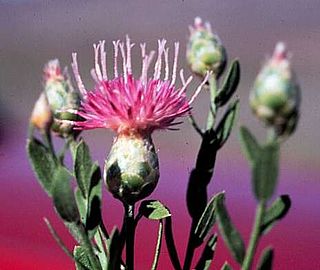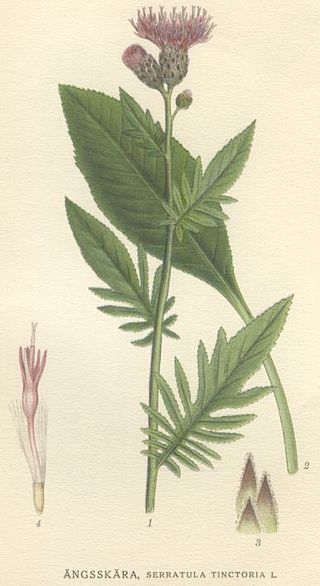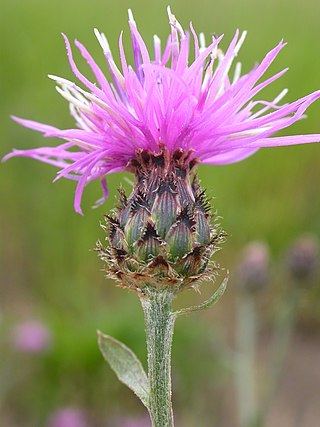
Lauraceae, or the laurels, is a plant family that includes the true laurel and its closest relatives. This family comprises about 2850 known species in about 45 genera worldwide. They are dicotyledons, and occur mainly in warm temperate and tropical regions, especially Southeast Asia and South America. Many are aromatic evergreen trees or shrubs, but some, such as Sassafras, are deciduous, or include both deciduous and evergreen trees and shrubs, especially in tropical and temperate climates. The genus Cassytha is unique in the Lauraceae in that its members are parasitic vines. Most laurels are highly poisonous.

Bombacaceae were long recognised as a family of flowering plants or Angiospermae. The family name was based on the type genus Bombax. As is true for many botanical names, circumscription and status of the taxon has varied with taxonomic point of view, and currently the preference is to transfer most of the erstwhile family Bombacaceae to the subfamily Bombacoideae within the family Malvaceae in the order Malvales. The rest of the family were transferred to other taxa, notably the new family Durionaceae. Irrespective of current taxonomic status, many of the species originally included in the Bombacaceae are of considerable ecological, historical, horticultural, and economic importance, such as balsa, kapok, baobab and durian.

Rhaponticum repens, synonym Acroptilon repens, with the common name Russian knapweed, is a bushy rhizomatous perennial, up to 80 cm tall. Stems and leaves are finely arachnoid-tomentose becoming glabrous and green with age. The rosette leaves are oblanceolate, pinnately lobed to entire, 2–3 cm wide by 3–8 cm long. The lower cauline leaves are smaller, pinnately lobed; the upper leaves become much reduced, sessile, serrate to entire. The heads are numerous terminating the branches. Flowers are pink to purplish, the marginal ones not enlarged. The outer and middle involucral bracts are broad, striate, smooth with broadly rounded tips; the inner bracts are narrower with hairy tips. Pappus present with bristles 6–11 mm long. Fruit is a whitish, slightly ridged achene.

Senecioneae is the largest tribe of the Asteraceae, or the sunflower family, comprising over 150 genera and over 3,500 species. Almost one-third of the species in this tribe are placed in the genus Senecio. Its members exhibit probably the widest possible range of form to be found in the entire plant kingdom, and include annuals, minute creeping alpines, herbaceous and evergreen perennials, shrubs, climbers, succulents, trees, and semi-aquatic plants.

Ornithogalum is a genus of perennial plants mostly native to southern Europe and southern Africa belonging to the family Asparagaceae. Some species are native to other areas such as the Caucasus. Growing from a bulb, species have linear basal leaves and a slender stalk, up to 30 cm tall, bearing clusters of typically white star-shaped flowers, often striped with green. The common name of the genus, star-of-Bethlehem, is based on its star-shaped flowers, after the Star of Bethlehem that appears in the biblical account of the birth of Jesus. The number of species has varied considerably, depending on authority, from 50 to 300.

The Cardueae are a tribe of flowering plants in the daisy family (Asteraceae) and the subfamily Carduoideae. Most of them are commonly known as thistles; four of the best known genera are Carduus, Cynara, Cirsium, and Onopordum.

Rhaponticum is a genus of flowering plants in the tribe Cardueae within the family Asteraceae.

Serratula is a genus of plants in the tribe Cardueae within the family Asteraceae native to Eurasia. Plumeless saw-wort is a common name for plants in this genus. Serratula as traditionally defined contains at least two groups: one of which is basal within the subtribe Centaureinae and one of which is derived; the former group can be moved to the genus Klasea.

The genus Cousinia of the tribe Cardueae is in its current circumscription one of the larger genera in the Asteraceae, with approximately 650-700 species distributed in central and western Asia.

Carduoideae is the thistle subfamily of the Asteraceae, or sunflower family, of flowering plants. It comprises a number of tribes in various circumscriptions of the family, in addition to the Cynareae.

Eutrochium is a North American genus of herbaceous flowering plants in the family Asteraceae. They are commonly referred to as Joe-Pye weeds. They are native to the United States and Canada, and have non-dissected foliage and pigmented flowers. The genus includes all the purple-flowering North American species of the genus Eupatorium as traditionally defined, and most are grown as ornamental plants, particularly in Europe and North America.

Vernonieae is a tribe of about 1300 species of plants in the aster family. They are mostly found in the tropics and warmer temperate areas, both in the Americas and the Old World. They are mostly herbaceous plants or shrubs, although there is at least one tree species, Vernonia arborea.

The Cichorioideae are a subfamily of the family Asteraceae of flowering plants. Familiar members of Cichorioideae include lettuce, dandelions, chicory and Gazania species. The subfamily comprises about 240 genera and about 2900 species. It is heterogeneous and hard to characterize except with molecular characters.

Flaveria is a genus of plants in the family Asteraceae. They are sometimes called yellowtops. Some are annual or perennial herbs and some are shrubs. They bear yellow flowers in heads, with zero, one, or two ray florets in each head. These plants are found in the Americas, Asia, Africa, and Australia.
Oligochaeta is a genus of Asian plants in the tribe Cardueae within the family Asteraceae.

Liabeae is a tribe in the plant family Asteraceae. It is endemic to the Neotropics, where it is most diverse in the northern and central Andes. The center of diversity is in Peru.

Berardia is a monotypic genus of flowering plants in the family Asteraceae, containing the single species Berardia subacaulis. It is an alpine plant native to the Alps.

Carduncellus is a genus of flowering plants in the family Asteraceae. They are native to the western Mediterranean and surrounding regions.

Rhaponticum scariosum, common name Giant Scabiosa, is a perennial herbaceous flowering plant of the genus Rhaponticum of the family Asteraceae.

Gilliesieae is a tribe of herbaceous geophyte plants belonging to the subfamily Allioideae of the Amaryllis family (Amaryllidaceae). Described in 1826, it contains fifteen genera and about eighty species. It has been variously treated as a subfamily or tribe. It is native to the Southern United States, Central and South America, predominantly Chile. Of the three tribes of genera that make up the subfamily Allioideae, Gilliesieae is the largest and most variable. The tribe was divided into two tribes in 2014, Gilliesiae s.s. and Leucocoryneae, based on differences in floral symmetry and septal nectaries.

















